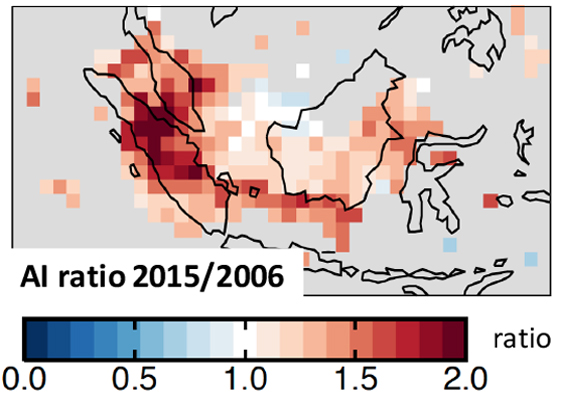El Niño conditions shift patterns of rainfall and fire across the tropics. During El Niño years, the number and intensity of fires increase, especially under drought conditions in regions accustomed to wet weather. Fires in Equatorial Asia are especially severe during El Niño years - e.g., 2006 and especially 2015. The 100,000 premature deaths due to the 2015 haze occurred mostly in the one-year aftermath of the fires.
Smoke exposures were calculated using the GEOS-Chem adjoint, ground-based measurements, and GFAS fire emissions. The estimated doubling of smoke exposures from 2006 to 2015 was confirmed with Ozone Monitoring Instrument (OMI) observations of aerosol index. Excess mortality was then calculated using smoke exposures.


Aerosol index (AI) from the OMI on board Aura for Sept-Oct 2015. Results show a doubling compared to Sept-Oct 2006.
Koplitz et al., 2016
Data Sources: "Public health impacts of the severe haze in Equatorial Asia in September-October 2015: Demonstration of a new framework for informing fire management strategies to reduce downwind smoke exposure"